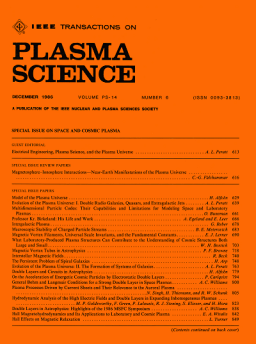The IEEE Nuclear and Plasma Sciences Society (NPSS) is a transnational group of about 3000 professional engineers and scientists.[1] The IEEE-affiliated Society sponsors seven conferences and symposia, and two peer-reviewed journals.[2]
The IEEE is the world’s largest technical professional organization with more than 360,000 members in around 175 countries.
History of the NPSS
In 1947, the Institute of Radio Engineers (IRE) formed the Nuclear Studies Committee to assess the role of the IRE in the field. Two years later, the Professional Group on Nuclear Science was formed. In 1954 the first issue of the Transactions on Nuclear Science appeared, increasing to four issues per year in 1956.
In 1963 the American Institute of Electrical Engineers (AIEE) merged with the IRE to form the IEEE, and the AIEE Nucleonics Committee and the Committee on Nucleaonic and Radiation Instruments merged with the IRE Professional Group on Nuclear Science on October 29, 1963, to become the Nuclear Science Group of the IEEE.
In 1972, the scope of the group was widened to include plasma sciences, and the group became a Society, it’s name changing to the Nuclear and Plasma Sciences Society.[3]
Publications
Transactions on Nuclear Science
The first issue of the Transactions on Nuclear Science first appeared in 1954, the number of issues rising to four per year in 1956. In 2005, the journal was ranked No.3 for impact factor in Nuclear Science & Engineering by Thomson.[4]
(Web site)
Transactions on Plasma Science
The first issue of the Transactions on Plasma Science appeared in 1973. The ‘Tennessee Orange,’ cover color was picked by Igor Alexeff, Professor, University of Tennessee, Knoxville.[5] Published bimonthly, its scope includes all aspects of the theory and application of plasma science, and regularly features “Special issues” (eg. eight in 2004). [6] Between 2000-2004, the journal was ranked No.10 for impact factor in “Physics – Fluids & Plasmas” by Thomson.[7] (Web site) The journal insists on having peer reviewed manuscripts.[5]
- Special Issues on Space and Cosmic Plasma:
-
- Vol 14 No 6 (Dec 1986), Special Issue on Space and Cosmic Plasma (electrical engineering, plasma science, and the plasma universe), Contents
-
- Vol 17 No 2 (Apr 1989), Special Issue on Space and Cosmic Plasma (golden anniversary of magnetic storms and the aurora, dedicated to Hannes Alfvén in recognition of his 80th birthday), Contents
-
- Vol 18 No 1 (Feb 1990), Special Issue on Space and Cosmic Plasma (Plasma Cosmology), Proceedings of the IEEE International Conference on Plasma Cosmology (First Workshop on Plasma Cosmology), La Jolla, California, USA, 20-22 February 1989. Contents
-
- Vol 20 No 6 (Dec 1992), Special Issue on Space and Cosmic Plasma (plasma experiments in the laboratory and in space.) Contents
-
- Vol 28 No 6 (Dec 2000), 5th Special Issue on Space and Cosmic Plasma (Space Weather). Contents
-
- Vol 31 No 6 (Dec 2004), 6th Special Issue on Space and Cosmic Plasma, Contents
-
- Vol 35 No 4 (Aug 2007), 7th Special Issue on Space and Cosmic Plasma Contents
- For other articles and resources on the Plasma Universe, see the Plasma Universe resources.
Transactions on Medical Imaging
The journal encourages papers on the imaging of body structures, usually in situ, rather than microscopic biological entities.[8] In the Journal Citation Reports (JCR) from Thomson, which ranks journals by their impact factor, in 2005, the journal was ranked:[4]
- No.1 in Imaging Science & Photographic Technology
- No.2 in Electrical & Electronic Engineering
- No.3 in Computer Science, Interdisciplinary Applications
- No.3 in Biomedical Engineering
- No.6 in Radiology, Nuclear Medicine & Medical Imaging
Fields of Interest
Areas of technical activity include:[9]
|
|
|
Notes
- ↑ IEEE Nuclear and Plasma Sciences Society (NPSS) new member letter
- ↑ Nuclear and Plasma Sciences Society (NPSS) Home Page
- ↑ History of the NPSS
- ↑ 4.0 4.1 Citations to IEEE Journals Continue to Climb
- ↑ 5.0 5.1 History of the Founding of the Transactions on Plasma Science
- ↑ TPS Annual Report (2004)
- ↑ Journals Ranked by Impact, “What’s New in Research: May 8, 2006“
- ↑ IEEE Transactions on Medical Imaging, Statement of Editorial Policy
- ↑ NPSS Fields of interest
- ↑ IEEE Transactions on Medical Imaging, Statement of Editorial Policy
